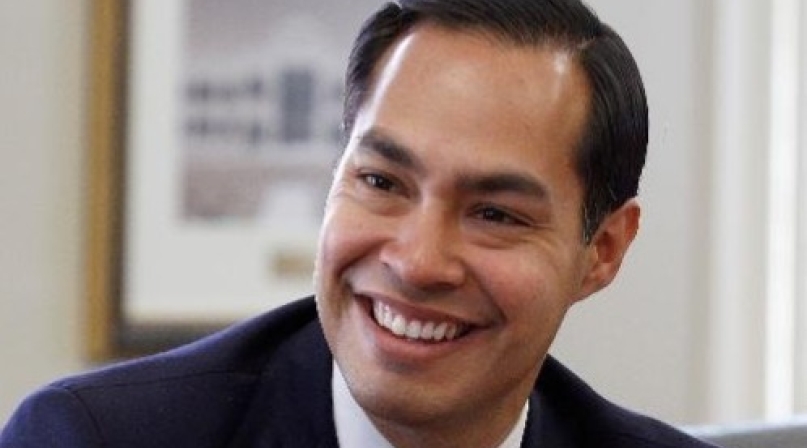Homelessness: the view from Department of Housing and Urban Development Secretary Julian Castro
Upcoming Events
Related News

How successful has HUD and the Administration been in achieving the goals set for ending homelessness?
Since 2010, when the president launched Opening Doors, the first-ever federal strategic plan to prevent and end homelessness, we’ve made historic progress. Among veterans alone, we’ve reduced homelessness by nearly half in that time.
Overall homelessness is down by more than 10 percent during the Obama Administration. We’re very proud of what we’ve been able to accomplish. While we’re clear-eyed about the work that’s still ahead, I believe we are on the right track.
What roles do counties and other local governments play in achievement of the goals for “ending homelessness”?
This unprecedented progress would not be possible without the dedication of local leaders. That’s where the rubber meets the road. As a former mayor, I appreciate the demands on local governments to deliver results for the people they serve.
On the issue of homelessness, it could be easy for a local official to not put it at the top of the priority list. But I’ve seen so many leaders step up to the challenge of ending homelessness — and the folks that put in the effort and follow best practices have often seen tremendous progress that benefits their entire community.
And counties feel the pressures that homelessness puts on their own health and human services programs. Aligning county-led programs with efforts to identify, prevent and end homelessness makes sense and works better.
What are the key strategies, partnerships and services to help improve outcomes for homeless populations?
“Housing First” has been critical to the success of communities across the nation. The old-school model for ending homelessness tells us that we must require a person experiencing homelessness to solve their personal challenges first — like getting sober, for example — before they’ll be offered housing. For most folks, that’s just not a successful approach. It’s easier to tackle other problems once you’ve got a safe, stable place to call home. That’s the Housing First model in action.
It has been a highly effective strategy among folks who are experiencing chronic homelessness and have higher service needs as well as for families with children who are having their first housing crisis.
In the effort to end veteran homelessness specifically, we’ve also had a great amount of success with the HUD-Veterans Affairs Supportive Housing (HUD-VASH) program. It’s a joint HUD-VA offering that pairs HUD rental assistance in the form of a voucher with the supportive services provided by a VA medical center. The HUD-VASH program has helped more than 117,000 veterans.
When a state or local government claims to have ended homelessness for a certain population, what does this really mean?
For the three states and 33 communities that have already achieved an effective end to veteran homelessness, it means they’ve put a system in place to ensure homelessness is prevented wherever possible. If it can’t be prevented, they can ensure it is a rare, brief and one-time experience. What it doesn’t mean is that there will never be another veteran who experiences homelessness in their community. We know there will always be folks at risk of experiencing homelessness for a number of reasons, whether it’s a bad turn in the economy, health issue or an unexpected life event. That’s why we need to keep building on our momentum and put strong response systems in place in every community.
What are the key takeaways thus far from the “ending homelessness” initiative?
We now know that ending homelessness is no longer a pipe dream. It’s achievable — and communities around the country have stepped up to prove it. This has been made possible through unprecedented partnerships at the federal, state and local level as well as with the business community, nonprofits and philanthropy. It’s also required a significant investment from Congress that we have seen for veterans.
What we need going forward is that same level of partnership, investment and energy to be focused on making the same progress with families, youth and the chronically homeless as we’ve seen among veterans.
The good news is that ending homelessness is not a partisan issue. We all have a vested interest in solving this challenge and strengthening our communities. That gives me hope that this great work that was really catalyzed during the Obama Administration will carry on in the future.
What are HUD and other agency partners doing to ensure the positive outcomes for homeless populations including veterans, families and youth continue beyond the Obama Administration?
Under the president’s Opening Doors plan, HUD will continue to work strategically with the U.S. Interagency Council on Homelessness (USICH) to coordinate the 19 different federal agencies that work to prevent and end homelessness.
One of the key factors in our progress so far is the work of USICH. It’s broken down silos that too often prevented natural partnerships at the federal level and it’s made it possible to coordinate this highly effective national effort.
Next October, USICH is facing a sunset deadline. I’ve been a strong proponent of an extension of its mandate and will continue to advocate for the Council to lead this effort beyond the Obama Administration. If we want to continue making a positive impact for the folks who are facing homelessness in our nation, we need to leave a strong system in place to carry on this work in the years to come.
Attachments
Related News

County Countdown – Dec. 15, 2025
Every other week, NACo's County Countdown reviews top federal policy advocacy items with an eye towards counties and the intergovernmental partnership.
Stretching small opioid settlement allocations helps funding do more
States and localities are set to receive $56 billion in opioid settlement dollars over an 18-year period, but not every county that receives settlement funding will get enough to build out infrastructure.